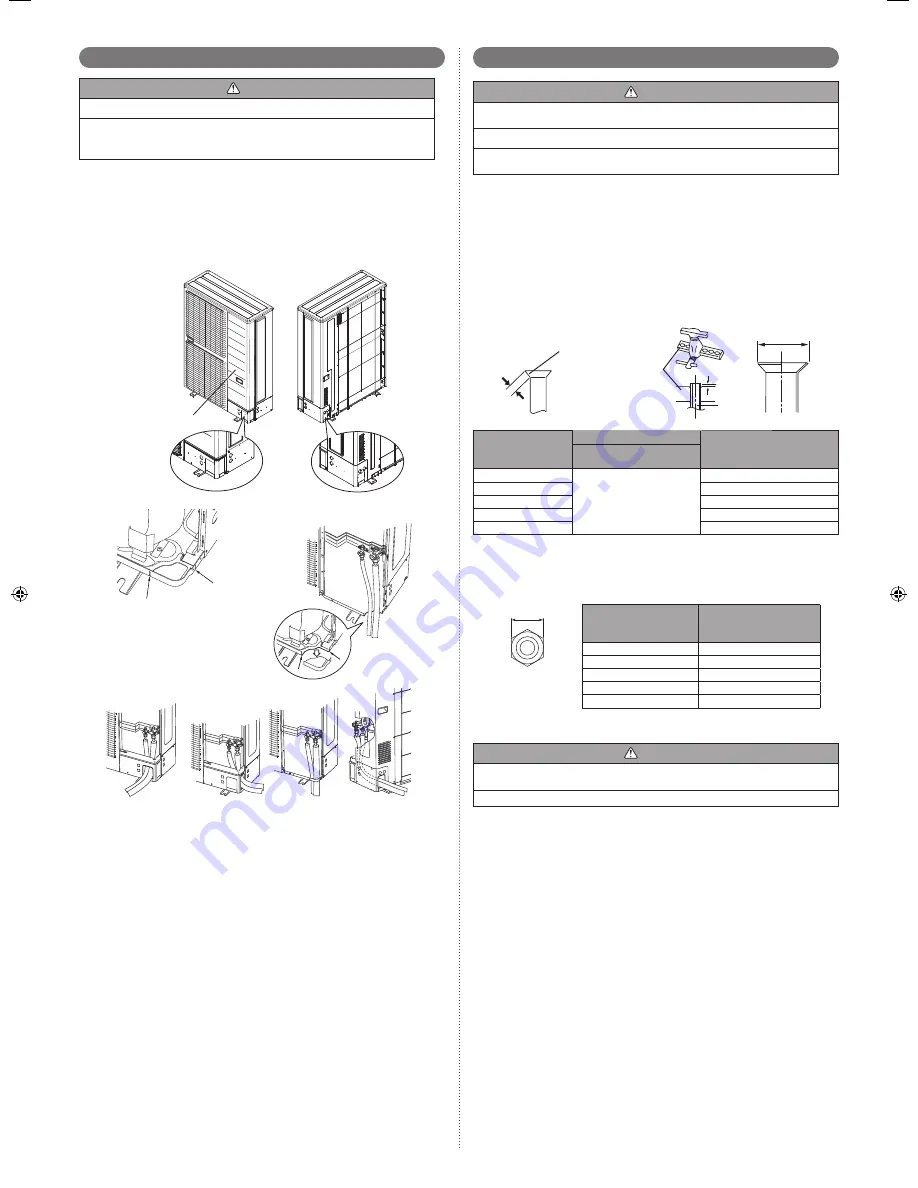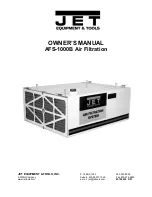
En-7
Pipe connection
5. 4.
CAUTION
Do not use mineral oil on a
fl
ared part. Prevent mineral oil from getting into the system
as this would reduce the lifetime of the units.
While brazing the pipes, be sure to blow dry nitrogen gas through them.
The maximum lengths of this product are shown in the table. If the units are further
apart than this, correct operation cannot be guaranteed.
Flaring
5. 4. 1.
Use special pipe cutter and
fl
are tool exclusive for R410A.
•
(1) Cut the connection pipe to the necessary length with a pipe cutter.
(2) Hold the pipe downward so that the cuttings will not enter the pipe and remove any
burrs.
(3) Insert the
fl
are nut (always use the
fl
are nut attached to the indoor and outdoor
units respectively) onto the pipe and perform the
fl
are processing with a
fl
are tool.
Leakage of refrigerant may result if other
fl
are nuts are used.
(4) Protect the pipes by pinching them or with tape to prevent dust, dirt, or water from
entering the pipes.
L
Check if [L] is
fl
ared uniformly
and is not cracked or scratched.
Pipe
A
B
Die
Pipe outside
diameter [mm (in.)]
Dimension A (mm)
Dimension B 0
- 0.4
[mm]
Flare tool for R410A,
clutch type
6.35 (1/4)
0 to 0.5
9.1
9.52 (3/8)
13.2
12.70 (1/2)
16.6
15.88 (5/8)
19.7
19.05 (3/4)
24.0
When using conventional
fl
are tools to
fl
are R410A pipes, the dimension A should
•
be approximately 0.5mm more than indicated in the table (for
fl
aring with R410A
fl
are tools) to achieve the speci
fi
ed
fl
aring. Use a thickness gauge to measure the
dimension A.
Pipe outside
diameter
[mm (in.)]
Width across
fl
ats
of Flare nut
[mm]
6.35 (1/4)
17
9.52 (3/8)
22
12.70 (1/2)
26
15.88 (5/8)
29
19.05 (3/4)
36
Width across
fl
ats
Bending pipes
5. 4. 2.
CAUTION
To prevent breaking of the pipe, avoid sharp bends. Bend the pipe with a radius of
curvature of 100mm or more.
If the pipe is bent repeatedly at the same place, it will break.
If pipes are shaped by hand, be careful not to collapse them.
•
Do not bend the pipes at an angle of more than 90°.
•
When pipes are repeatedly bent or stretched, the material will harden, making it dif-
•
fi
cult to bend or stretch them any more.
Do not bend or stretch the pipes more than 3 times.
•
Opening the knockout hole
5. 3.
CAUTION
Be careful not to deform or scratch the panel while opening the knockout holes.
To protect the piping insulation after opening a knockout hole, remove any burrs
from the edge of the hole. It is recommended to apply rust prevention paint to the
edge of the hole.
Pipes can be connected from 4 directions, front, lateral side, rear side and bottom.
•
(Fig. A)
When connecting at the bottom, remove the service panel and piping cover on the
•
front of the outdoor unit, and open the knockout hole provided at the bottom corner of
the piping outlet.
It can be installed as shown on “Fig. B” cutting out the 2 slits as indicated on “Fig. C”.
•
(When cutting slits, use a steel saw.)
Fig. A
Service panel
Slit
Slit
Fig. B
Bottom
connection
Fig. C
Front
connection
Bottom
connection
Lateral
connection
Rear
connection
9380545026-02_IM.indb 7
9380545026-02_IM.indb 7
19/08/2013 17:19:27
19/08/2013 17:19:27









































